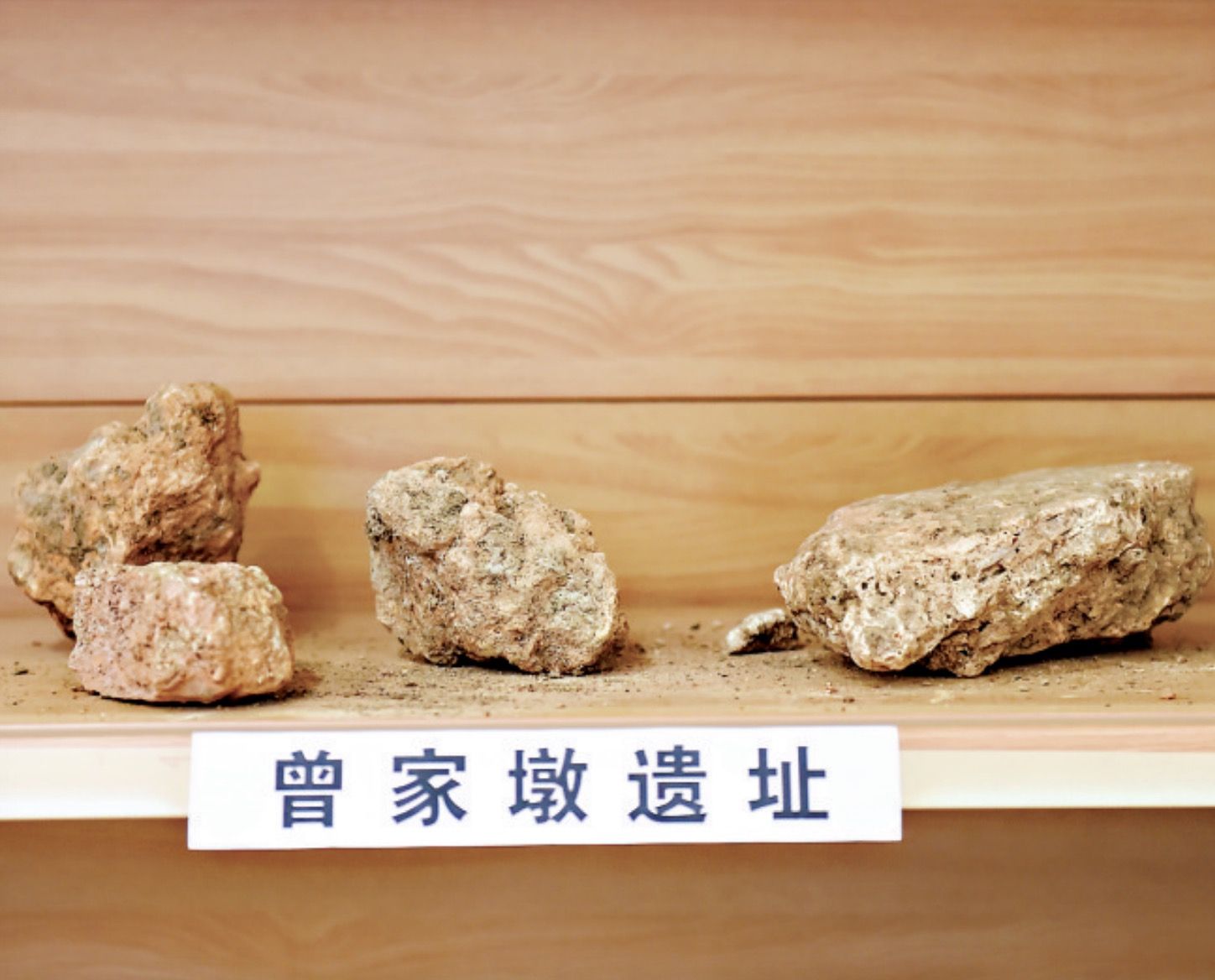Ancient ramparts found at construction site | 在建筑工地找到城墙
According to the experience of the archaeological academia, where there is a big tomb, there must be a big city.
有大墓必有大城,是考古界的经验。
The Chinese words "dun" (mound) and "dui" (pile) are often in the names of ancient tombs and sites. Therefore, taking "dun" as a clue, the archaeological team conducted a survey of the places with "dun" in their names in the surrounding villages. There is a Zhai Dun in Wufeng village within a few kilometers, Zengjia Dun in Baodian Village, Miao Dun in Taogang Village, and Da Dun in Linjiang Village.
“墩”“堆”常常就是古代墓葬封土、遗址的称呼。于是,以“墩”为线索,考古团队又对周边村子里带“墩”的地名进行了重点勘查:周边几公里范围内的五峰村有“寨墩”,宝店村有“曾家墩”,陶岗村有“庙墩”,林江村有“大墩”。

Mud blocks from Zengjia Dun wall
The difference between these mounds and Longwang Dun is that they are located along the Cangxi River and its tributaries. They are huge in size and surrounded by moats, showing obvious characteristics of the ruins of the Western Zhou dynasty.
这些墩和龙王墩不同之处在于都是沿仓溪河或其支流分布,形制巨大,周围有壕沟环绕,呈现明显的西周时代遗址特征。

Pieces of pottery found in Zengjia Dun
The Zengjia Dun site is located inside Hui'en Buddhist Temple, Baodian Village, Cangbu Sub-district. It is an oval earth platform about 6 meters high, 100 meters long from east to west and 75 meters wide from north to south, making it the largest of the four sites. At a large-scale construction site, from the soil removed during the excavation, large pieces of pottery made of violet, gray, black, muddy gray, and red clay were unearthed. After piecing the fragments together, the archaeological team identified the shapes of ancient cooking tripods, jars, plates, cups, and pots. According to the analysis of a large number of relics collected at the site, experts believe that Zengjia Dun is a ruins dating to the Western Zhou dynasty.
曾家墩遗址位于仓埠街宝店村慧恩禅寺内。 曾家墩遗址是一个高约6米的椭圆土台,东西长100米、南北宽75米,是4座遗址中最大的。一个现已停工的大型施工现场,曾经在开挖时翻出了地底的熟土,里面夹杂着大量夹砂红陶、灰陶、黑皮陶,还有泥质灰陶、红陶片。考古团队拼接这些陶片后,辨认出其中的器形有鬲、盂、盘、豆、罐等。 根据现场采集到的大量遗物分析,专家认为,曾家墩是一座西周时期的遗址。
The other three sites, Miao Dun, Zhai Dun, and Da Dun, are similar to Zengjia Dun in shape and are of the same time period. In other words, the Chinese ancestors of the Western Zhou dynasty built cities on the sites of earlier human settlements. These towns supported each other and formed a larger community.
庙墩、寨墩、曾家墩、大墩,形制相似,时代一致。也就是说,西周时代的先民在更早的人类聚居点基础上掀起了一个筑城的高潮,4座城池,互为掎角,守望相助。
The archaeological report preliminarily identified Longwang Dun as a tomb from the Eastern Zhou dynasty, and Zengjia Dun and Zhai Dun as ruins dating to the Western Zhou dynasty. These three newly discovered cultural sites are all of great significance in the academic study of the political, economic, military and cultural aspects of the Zhou dynasty in the region.
考古报告初步认定:“龙王墩为一东周时期墓葬,曾家墩及寨墩为西周时期遗址。此三处文物点均为新发现,对研究本地区周代的政治、经济、军事、文化等方面均有重要意义,具有很高的文物保护、科学研究等价值。”
(Edited by Ye Shiyu)


 互动
互动
 投诉建议
投诉建议 长江头条
长江头条 在线问答
在线问答 数字报
数字报
 移动端
移动端
 长江网移动端
长江网移动端 长江头条移动端
长江头条移动端
